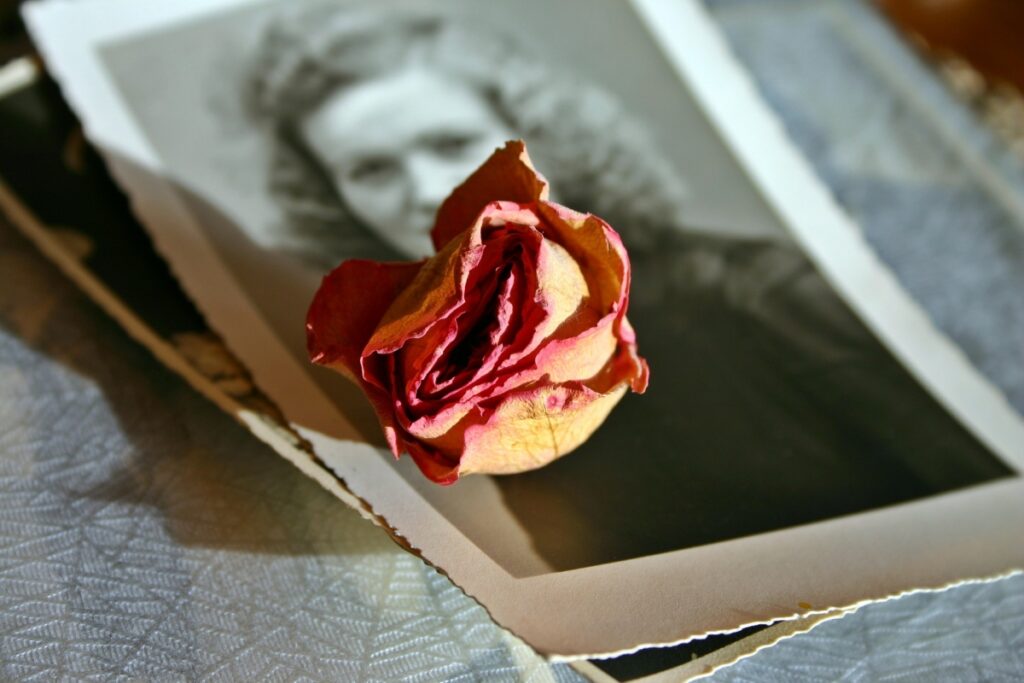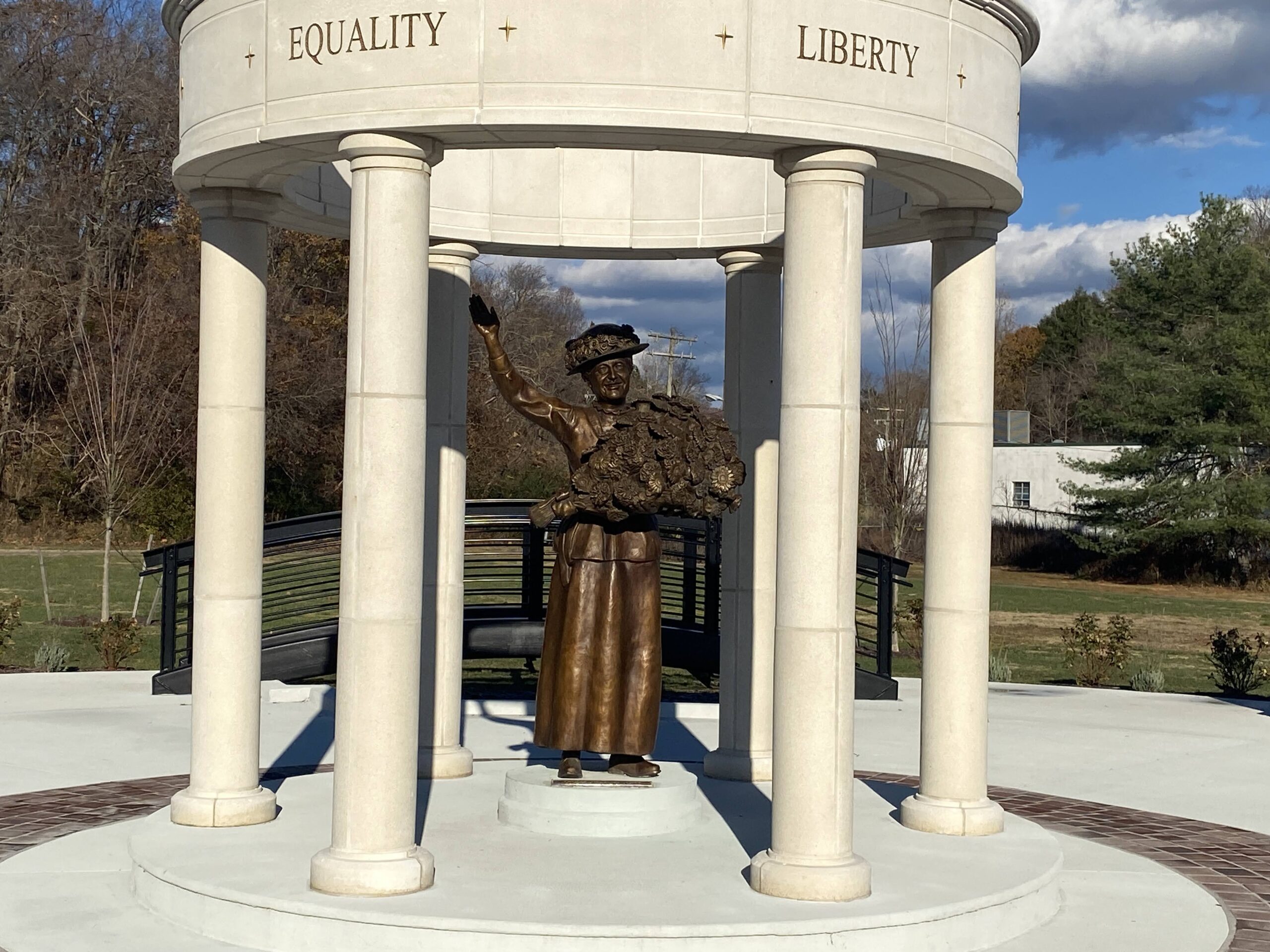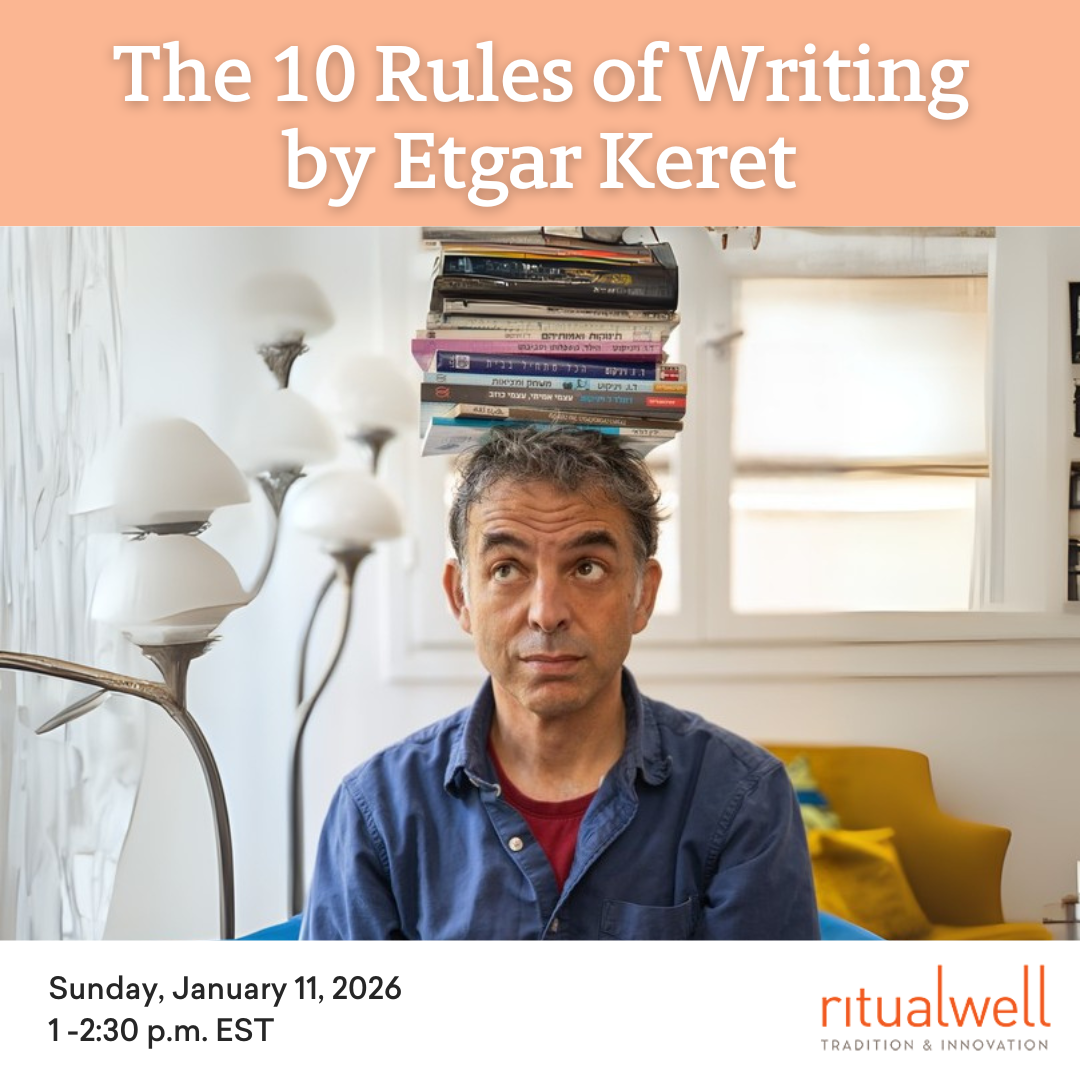Background
This ritual is an opportunity for someone to meaningfully mark a threshold when they reach or pass the age at which someone who was important in their life died. As Hope Edelman, author of The AfterGrief: Finding Your Way Along the Long Arc of Loss, observes, “new old grief” occurs “when you experience your old loss in a new way, and that typically happens when you reach a milestone in your life that requires you to revisit that loss and see it differently.”
While certain Jewish ritual moments tend to hold space for new old grief (e.g. a moment of remembering ancestors at a wedding or baby naming), I could not find any extant Jewish rituals specifically dedicated to the new old grief of reaching or passing the age of a deceased friend or relative. These age correspondence events, events at which one’s own age corresponds with another’s, spark new old grief in nuanced ways. For example, someone might feel scared that they themselves will die at the same age as the person they’re remembering. They might feel guilty for passing the person in age, pained by how young they now realize the person was, confused about being older than the person, and several other emotions. Many of these emotions may occur simultaneously, resulting in not only a confluence of new grief and old grief but also a confluence of seemingly antithetical feelings. With our Jewish tradition’s wisdom around both grieving and entering new years (i.e. Rosh Hashanah), I’ve created this ritual to support people at this unique threshold.
Setting
This ritual can take place on a birthday (e.g. the ritualist’s parent died at 46, and the ritualist is doing this ritual as they turn 46; alternatively, the ritualist’s parent died at 46, and the ritualist is doing this ritual as they turn 47), on the exact day of reaching or passing X’s age (e.g. the ritualist’s sibling died at 29 years and 82 days old, and the ritualist is doing this ritual as they turn 29 years and 82 or 83 days old), or at another threshold that feels relevant.
The ritual can be done anywhere the person feels comfortable and able to connect to the person who has died. It can take place at any time of day and can be done over Zoom if needed. The following script is for a small group gathering with close friends and family; I imagine the ritual taking place in the presence of friends and family who are one layer closer than those the person would invite to a birthday party. If the person would prefer to mark the occasion alone, the ritual can be adapted for individual use.
People & Materials
- Ritualist: the person passing X (the deceased friend or relative) in age
-
Small group of close friends and/or family
-
Shofar-blower (This can be the ritualist, facilitator, or someone else. If shofar or shofar-blower cannot be present physically, use a recording such as this one.)
-
Shofar
-
6 place-markers arranged in a circle (You can keep this simple by using plain pieces of paper, or you can be creative with this. Some creative options are collages, pictures, art, friends, etc.)
Ceremony
[Everyone stands in a circle around the circle of place-markers.]
Opening
Life after Death by Laura GilpinThese things I know:
How the living go on living
and how the dead go on living with them
so that in a forest
even a dead tree casts a shadow
and the leaves fall one by one
and the branches break in the wind
and the bark peels off slowly
and the trunk cracks
and the rain seeps in through the cracks
and the trunk falls to the ground
and the moss covers it
and in the spring the rabbits find it
and build their nest
inside the dead tree
so that nothing is wasted in nature
or in love.
Today, we’ve come together to mark the way that RITUALIST and X’s lives speak to each other. As RITUALIST turns AGE, the age AT/AFTER which X died, we honor both X and RITUALIST.
This moment holds both grief and hope. Like we hear in the blasts of the shofar, we can hear two types of cries in this moment: the cries of a mourner, wailing for their loss, and the cries of a newborn baby, using their voice for the first time in a world that is new to them. RITUALIST is both mourning and entering a world that is new to HIM/HER/THEM.
This is the start of a new year for RITUALIST, a Rosh Hashanah of sorts. It feels fitting that Rosh Hashanah is also called Yom Hazikaron (Day of Remembrance) and Yom T’ruah (Day of Shofar Blasts).* As we support RITUALIST in welcoming this new year of life, the sounds of the shofar will accompany RITUALIST, embodying the many memories and cries of this day.
RITUALIST, I invite you to enter into this circle [at whichever marker is the first/last].
Pause 1: T’ruah: The Cry of Grief
בָּרוּךְ אַתָּה ה’ שׁוֹמֵעַ קוֹל תְּרוּעַת עַמּוֹ יִשְׂרָאֵל בְּרַחֲמִים.
Baruch atah, Adonai, shomea kol t’ruat amo Yisrael b’rachamim. (Rosh Hashanah Liturgy, Shofarot)
Blessed is the One who listens to the voice of the God-wrestler’s cry, or t’ruah, with compassion.
[Shofar-blower blows shofar.* Pause and breathe in a moment of silence.]
Pause 2: Remembering X’s Death
There is a Jewish tradition to pause seven times on the way to bury someone*, showing how hard it can be to say goodbye and how precious each life is.* Inspired by this tradition, RITUALIST, I invite you to walk to the next point in the circle and pause.
[Ritualist walks to next point and pauses.]
Close your eyes and focus on the sounds of the shofar still echoing in your ears, like the cries of mourning. Take a moment to remember the final months and days of X’s life, and what it was like to lose HIM/HER/THEM. [Pause.]
When it feels right, you can open your eyes and move to the next marker in the circle.
Pause 3: Remembering X’s Life
Pausing here, close your eyes and remember X’s life. Who WAS/WERE HE/SHE/THEY? What WAS/WERE HE/SHE/THEY like in life? [Pause.]
When you’re ready, open your eyes and move to the next marker.
Pause 4: Feeling this Present Age
You are now AT/PAST X’s last age. Close your eyes and sense what it feels like to be AGE in this moment. [Pause.]
When you’re ready, open your eyes and move to the next marker.
Pause 5: What X Might Say to the Ritualist
With this feeling of AGE-ness, close your eyes and imagine what X might say — or what you would like them to say to you — today. [Pause.]
When you’re ready, open your eyes and move to the second-to-last marker.
Pause 6: What the Ritualist Would Say to X
You’ve had a chance to hear from X. Now, close your eyes and imagine what you would like to say to X today. [Pause.] Imagine that HE/SHE/THEY HEAR(S) you.
When you’re ready, open your eyes and move to the final marker. [Ritualist moves to the final marker, which is the same as the first marker.]
Pause 7: T’ruah: The Cry of Newness
Here you are, ending where you began — or, beginning where you ended. Perhaps both. Before we hear the blasts of the shofar one more time, welcoming the cries of your entrance into this new world, take a moment to close your eyes and feel the truths of this present moment.* [Pause.]
[Shofar-blower blows shofar. Pause and breathe in a moment of silence.]
Conclusion
[Sing or speak the Shehekhiyanu together:]
בָּרוּךְ אַתָּה ה’ אֱלֹהֵינוּ מֶלֶךְ הָעוֹלָם, שֶׁהֶחֱיָנוּ וְקִיְּמָנוּ וְהִגִּיעָנוּ לַזְּמַן הַזֶּה.
Baruch atah, Adonai, eloheinu melech haolam, shehekhiyanu , v’kiy’manu, v’higiyanu lazman hazeh.
Blessed is the Divine, which has kept us alive, sustained us, and brought us to this moment.
And together we say: Amen.
*Notes
-
Leviticus 23:24, the namesake for this ritual, also offers a combination of the concept of remembrance and t’ruah: “In the seventh month, on [day] one of the month, you are to have Sabbath-ceasing, a reminder by [horn-]blasting (Shabbaton Zikhron T’ruah).” T’ruah can mean “alarm/shout” or “shout of joy”. In the Torah, the seventh month (Tishrei) was originally not the New Year. It was a day of memory (zikaron – specifically, the Divine remembering the Israelites) and t’ruah. Later, in rabbinic practice, it became the New Year (Rosh Hashanah).
-
The ritualist and shofar-blower can determine which kinds of blasts would be most meaningful. T’ruah is often interpreted as a series of 9 staccato notes, though a Yemenite interpretation is that t’ruah is a blast of varying pitch. The shofar-blower can do either or both interpretations and can add other types of shofar blasts as is meaningful.
-
Mishnah Megillah 4:3: וְאֵין עוֹשִׂין מַעֲמָד וּמוֹשָׁב. When a minyan isn’t present, people can’t “stand and sit.” In his commentary on this mishnah, Bartenura connects the phrase to the following practice: “For the deceased, when they carry the dead to bury them, they would sit (today – we ‘stop’) seven times in honor of the deceased. And we recite on each and every period of eulogy: ‘Arise dear ones, arise; sit dear ones, sit.’ But with less than ten, it is not the way of the world.” The practice of pausing is also referenced in the Shulchan Arukh (Yoreh Deah 358:3), Kol Bo (108), and other sources. (See CCAR Responsum TRR 44-46.)
-
There is also a kabbalistic tradition for mourners to circle the dead in seven hakafot (circles). While not explicitly mentioned in this ceremony, it was one of the sources of inspiration for the circular shape.
-
The language of feeling the truths of this moment is inspired by ברוך דיין האמת (Baruch dayan ha-emet), the traditional words upon hearing of a death, which can be creatively interpreted as an opportunity to feel the truths of the moment.













